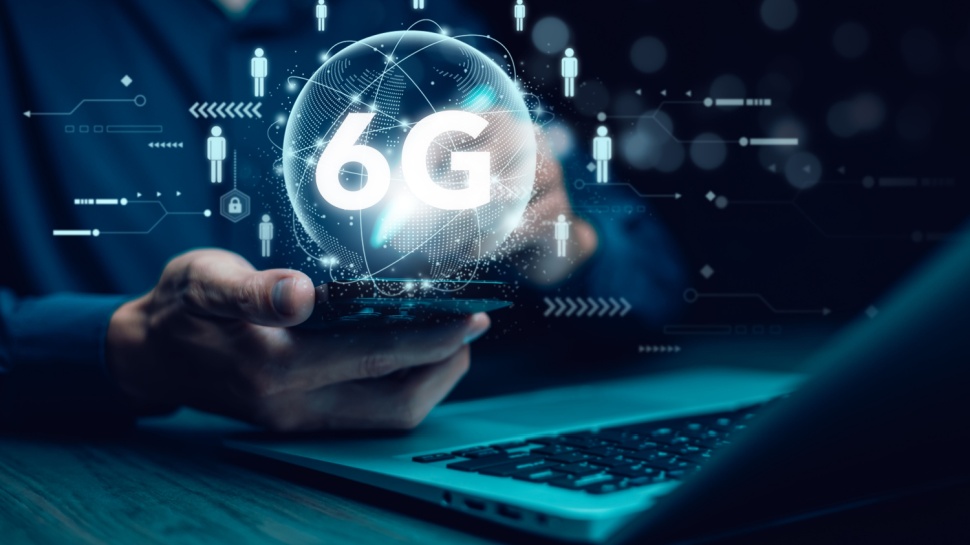What is 6G and what does it mean for businesses?
The opportunities and challenges for businesses in the 6G revolution

While 5G is still being rolled out on a global scale, we still need to cast an eye to the future of wireless connectivity and communication and the impact it has on businesses. It’s time to talk about 6G.
Director of Sales & Business Development Europe at MediaTek.
Going beyond the foundations of 5G
In areas where 5G has already been deployed, enhanced speed and connectivity benefits are already game changers. But 6G will push the boundaries even further and drive the next wave of digital transformation. It will unleash unprecedented possibilities, accelerating the core use cases of 5G: ultra-reliable and low-latency communications (URLLC), massive machine-type communications (mMTC), and enhanced mobile broadband (eMBB).
But where 6G networks will really evolve the future of digital connection is in how it goes beyond the foundations of 5G, blurring the boundaries between end-devices and the network-dedicated infrastructure. With 6G, devices won’t just connect, they’ll actively contribute to building and managing the network, seamlessly integrating computing and communication.
Operating at unparalleled radio frequencies, 6G will unlock bleeding-edge innovations —particularly AI — facilitating a higher speed of communication with faster throughput, reduced latency and greater energy efficiency. Crucially, it will become the foundation for a new generation of technology, driven by several core trends: support for emerging technologies with higher performance capabilities, increasing data rates, a focus on network densification, and ubiquitous connectivity.
Our vision for 6G incorporates these key drivers and will be a universal system, supporting deployment in any scenario, to offer seamless connectivity wherever it is needed.
Ambient intelligence and the implications for businesses
For businesses, an implementation of 6G will offer transformative opportunities across industries.
6G is still in the design and research stage, but the systems are already being designed with ambient intelligence (Aml) in mind. This next generation of connectivity is set to revolutionize how we interact with technology, as it becomes integrated into our everyday life. It will anticipate our needs and adjust on its own, before we even know what they are. Whilst this concept may seem slightly unprecedented, the possibilities for businesses are boundless.
In business, ambient intelligence will enable real-time responsiveness through its dynamic operations replacing rigid pre-determined systems. This means greater efficiency, more intelligent performance management and in-depth insights supported by real-time data analysis. For instance, it could transform how supply chains are managed, automatically adjusting production lines based on demand or even flagging maintenance issues before they arise. In retail, it could mean that consumers can interact with product displays, or help store managers optimize their shops, by pinpointing the best product positioning or ideal temperatures to store it.
The seamless integration of advancements in IoT, edge computing and real-time AI will allow businesses to streamline decision-making, become more efficient and discover new revenue streams.
To realize the full potential of these business use cases for Aml, we need a system that delivers a lightning-fast, low-latency network that ensures top-level privacy and security. This is where 6G will shine.
However, there is a slight catch: Power consumption. With growing concerns over 5G’s energy footprint, it is critical that we develop a 6G network that balances innovation with sustainability.
Challenges of power consumption
For mobile communications, a move towards 6G focuses on providing improved performance and a higher quality of service for businesses. But as we witness its evolution, it is crucial to consider balancing sustainability with power consumption.
Simply put: a growing demand for mobile data and an increasing number of devices served by these networks requires more energy. This could affect a business's Scope 2 and 3 carbon emissions. Scope 2 emissions refers to the energy a company purchases and uses, e.g. the electricity it purchases to power its operations; Scope 3 refers to the broader emissions across the business's supply chain, so it could be energy used by suppliers or even the end users. Managing both will be essential for businesses in order to meet their sustainability goals.
To align with the United Nations Sustainable Development Goals (SDGs), it is critical that the industry prioritizes renewable energy sources and improving energy efficiency. Technologies, such as smart grids, AI, distributed energy storage systems and green software, will be pivotal in achieving a sustainable design of the network.
Furthermore, 6G energy consumption can be significantly reduced by implementing strategies like dynamic scaling to adjust power usage based on data load, and optimizing device and network activity to cut power consumption during downtime. Addressing these concerns and challenges will be vital in shaping the timeline for its widespread adoption and integration into businesses.
When could we expect to see 6G rolled out?
At the current rate of advancements, businesses should prepare for the arrival of 6G for commercialization in 2030, with a pre-commercialization likely to occur a year prior. 6G will reshape industries, offering improved speed, connectivity and support for developing technologies. However, it is imperative that before this timeframe we carry out our plan in making it more sustainable and accessible so that businesses of all sizes can equally benefit from the newest generation of wireless communications.
We've featured the best business smartphone.
This article was produced as part of TechRadarPro's Expert Insights channel where we feature the best and brightest minds in the technology industry today. The views expressed here are those of the author and are not necessarily those of TechRadarPro or Future plc. If you are interested in contributing find out more here: https://www.techradar.com/news/submit-your-story-to-techradar-pro
Are you a pro? Subscribe to our newsletter
Sign up to the TechRadar Pro newsletter to get all the top news, opinion, features and guidance your business needs to succeed!
Director of Sales & Business Development Europe at MediaTek.
You must confirm your public display name before commenting
Please logout and then login again, you will then be prompted to enter your display name.